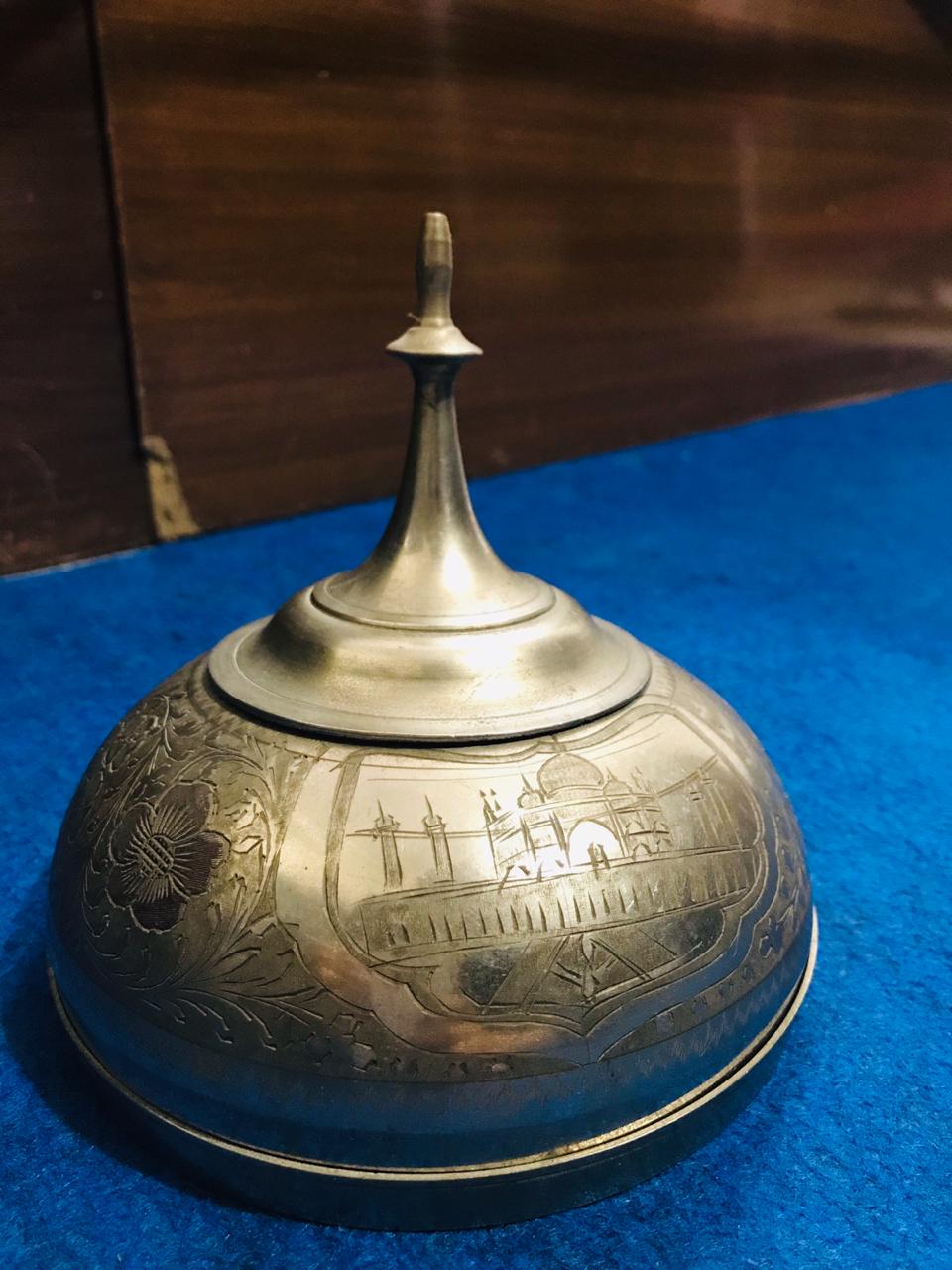Khaas Daan
Paan is a preparation primarily made using betel leaves. Betel or btele (Portuguese) is derived from the Malayalam word vettila (vetel meaning betel and ila meaning leaf). The betel leaf is known as paan in Bangla and Hindi. The leaf is wrapped with various fillings, like raisins, saffron, roasted coconut, and areca nut. Ancient Indian history is filled with rich stories, including folding techniques of the paan. For example, the gilauri (triangle shape) is famous for holding the paan in a desired shape and inserting a clove in it (to act as a pin). The paans are placed and served in a covered platter called the khaas daan, used mostly for presenting the dish to one's guests on special occasions.
This particular khaas daan was made in Moradabad using brass. Moradabad was established in 1600 CE by Murad, the son of Emperor Shah Jahan. The city is famous across the globe for its brass work, known as 'Brass City' or Peetal Nagri in the local language. The handicrafts made from brass are exported to America, Britain, Canada, Germany and Middle East Asia. Brass, an alloy of zinc and copper, has been a part of India's rich heritage since ages.
Archaeological evidence points towards the use of brass in India since the third century BC, when sculptures and idols were made using a five metal alloy called panchdhatu. Such evidence also shows references to 400 BCE in India, when betel leaves were chewed with areca nuts. A reference by Vatsyayana in the Kamasutra includes betel leaf in solah shringar (sixteen adornments), and it is believed that it was used to add colour to the lips. From mentions in foreign accounts to its popularisation by Nur Jahan, paan was entrenched in India's culture, so much so that an allowance known as paan kharch would be given to women. This khaas daan from 1969 was a part of the wedding trousseau of the contributor's grandmother.
Contributed By :
Haya Wakil
